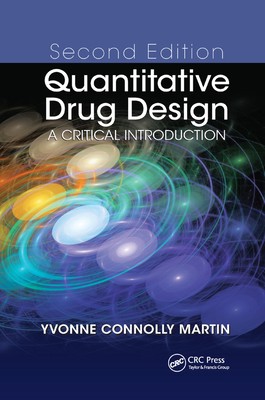
- We will send in 10–14 business days.
- Author: Yvonne C Martin
- Publisher: CRC Press
- ISBN-10: 0367384140
- ISBN-13: 9780367384142
- Format: 15.5 x 23.1 x 1.8 cm, softcover
- Language: English
- SAVE -10% with code: EXTRA
Reviews
Description
Since the publication of the first edition, the field has changed dramatically. Scientists can now explicitly consider 3D features in quantitative structure-activity relationship (QSAR) studies and often have the 3D structure of the macromolecular target to guide the 3D QSAR. Improvements in computer hardware and software have also made the methods more accessible to scientists. Taking these developments into account, Quantitative Drug Design: A Critical Introduction, Second Edition shows scientists how to apply QSAR techniques at a state-of-the-art level.
New to the Second Edition
- A new chapter on methods that identify the 3D conformations to use for 3D QSAR
- New discussions on partial least squares, multidimensional scaling, clustering, support vector machines, kNN potency prediction, and recursive partitioning
- Expanded case studies that include the results of data that has been re-analyzed using newer methods
- A new case study on the discovery of novel dopaminergics with pharmacophore mapping and CoMFA
- A new case study on the application of CoMFA to series in which the 3D structure of the ligand-protein complex is known
Based on the author's four decades of experience in all areas of ligand-based computer-assisted drug design, this invaluable book describes how to transform ligand structure-activity relationships into models that predict the potency or activity/inactivity of new molecules. It will help you avoid traps when dealing with quantitative drug design.
EXTRA 10 % discount with code: EXTRA
The promotion ends in 15d.23:52:30
The discount code is valid when purchasing from 10 €. Discounts do not stack.
- Author: Yvonne C Martin
- Publisher: CRC Press
- ISBN-10: 0367384140
- ISBN-13: 9780367384142
- Format: 15.5 x 23.1 x 1.8 cm, softcover
- Language: English English
Since the publication of the first edition, the field has changed dramatically. Scientists can now explicitly consider 3D features in quantitative structure-activity relationship (QSAR) studies and often have the 3D structure of the macromolecular target to guide the 3D QSAR. Improvements in computer hardware and software have also made the methods more accessible to scientists. Taking these developments into account, Quantitative Drug Design: A Critical Introduction, Second Edition shows scientists how to apply QSAR techniques at a state-of-the-art level.
New to the Second Edition
- A new chapter on methods that identify the 3D conformations to use for 3D QSAR
- New discussions on partial least squares, multidimensional scaling, clustering, support vector machines, kNN potency prediction, and recursive partitioning
- Expanded case studies that include the results of data that has been re-analyzed using newer methods
- A new case study on the discovery of novel dopaminergics with pharmacophore mapping and CoMFA
- A new case study on the application of CoMFA to series in which the 3D structure of the ligand-protein complex is known
Based on the author's four decades of experience in all areas of ligand-based computer-assisted drug design, this invaluable book describes how to transform ligand structure-activity relationships into models that predict the potency or activity/inactivity of new molecules. It will help you avoid traps when dealing with quantitative drug design.


Reviews